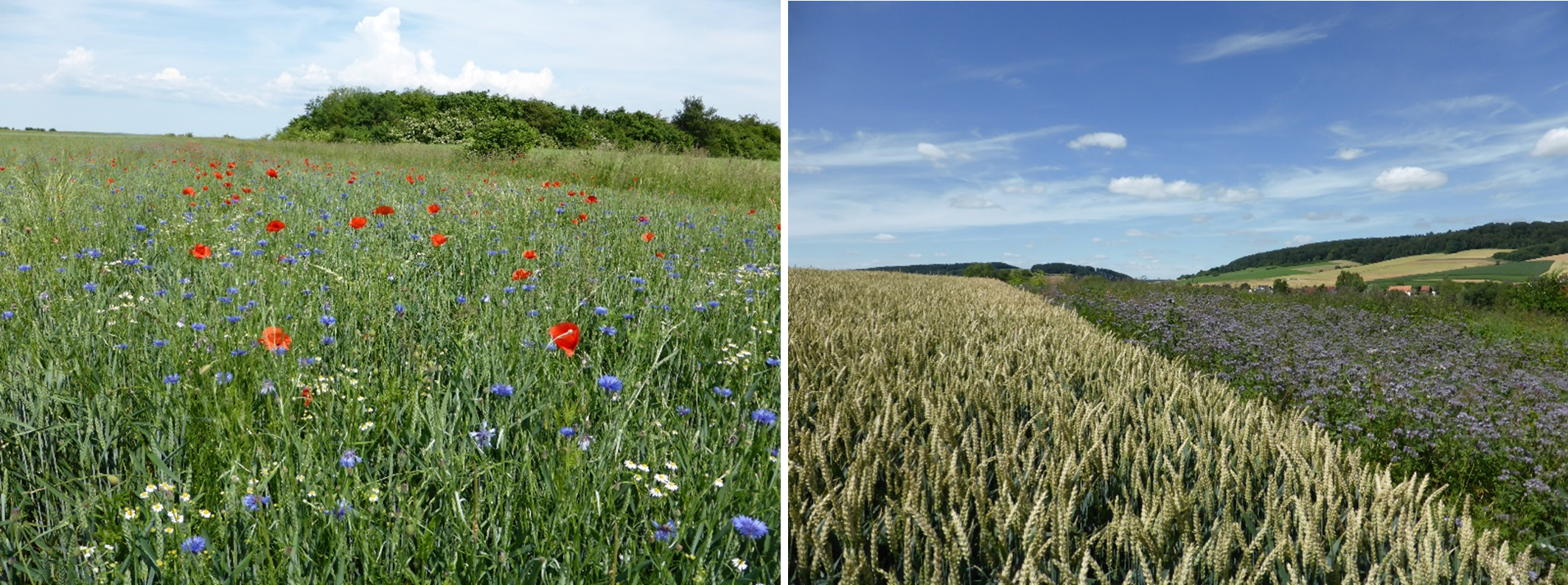Biological pest control is a key ecosystem service in sustainable agriculture. In their latest research, Edina Török and colleagues investigated and evaluated the efficacy of two of the most popular agri-environment schemes (AES): organic farming and flower strips.
Organic farming and flower strips both have features that are beneficial for the natural enemies of crop pests. Organic farming is considered to be an environmentally friendly agricultural strategy (excluding the use of synthetic pesticides and mineral fertilizers), whilst conventional agriculture with the partial transformation of fields to flower strips can be viewed as a semi-natural “nature reserve” at a small local scale.
Flower strips provide complementary food resources for a range of species, including the natural enemies of crop pests. Nectar and pollen are attractive for adult hoverflies and lacewings, many of which are known as pest predators. Flower strips also have a positive effect on parasitoid communities and can provide shelter from pesticides and offer potential overwintering sites.

To better understand the efficacy of each approach, we focused on two major pests in cereals – aphids and cereal leaf beetles – and their natural enemies. We selected 30 fields with winter wheat in central Germany along a field size gradient. Beyond the focal field, landscape-scale crop heterogeneity can determine ecosystem services because small field sizes in a landscape create high landscape heterogeneity, which supports different food resources and habitat conditions for a higher biodiversity. For this reason, the effect of mean field size in the landscapes was also analysed.


We found that the abundance of cereal leaf beetle larvae was higher in conventional fields with flower strips than in organic farming. Similarly, aphid abundance was lower in organic farming than conventional fields with flower strips. Parasitoids and natural enemies benefited from flower strips, however, they were unable to control the aphids. The abundance of natural enemies was also higher in landscapes with small mean field size.
Our results do not support a general conclusion as to whether the implementation of flower strips in the current form or organic farming is the better strategy to enhance biocontrol. Rather, they show that both measures have merits and could be used in combination. As such, we recommend that farmers be allowed to apply more flexible schemes so that they can adapt to local features, such as high pest pressure. For effective biological pest control, we recommend the reduction of field size and combination of organic farming with flower strips.
Organic farming, flower strips and small field sizes are all promising measures to reduce crop pests. However, we caution against using these measures separately and instead recommend that they are combined in order to enhance the natural enemy populations and facilitate the biological control of the main crop pests.
Read the full article, Organic farming supports lower pest infestation, but less natural enemies than flower strips, in Journal of Applied Ecology.

One thought on “Supporting biological pest control with different agri-environment schemes”